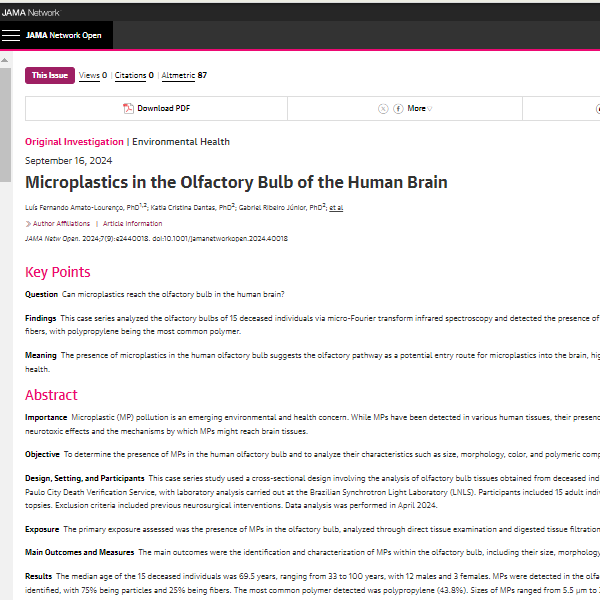
Microplastics in the Olfactory Bulb of the Human Brain
This case series provides evidence of MPs found in the human olfactory bulb, suggesting a potential pathway for the translocation of MPs to the brain. The findings underscore the need for further research on the health implications of MP exposure, particularly concerning neurotoxicity and the potential for MPs to bypass the blood-brain barrier.

Discovery and analysis of microplastics in human bone marrow
Pyrolysis-gas chromatography-mass spectrometry (Py-GC/MS) is an emerging thermal analysis technique that reliable qualified and quantified data for MPs risk assessment of human health [15], [26]. Laser direct infrared spectroscopy (LD-IR) has been widely used to characterize of MPs, including their type, size, and morphology [12]. This study utilized Py-GC/MS, LD-IR, and scanning electron microscopy (SEM) to analyze and identify the accumulation of MPs in the bone marrow. The results provide crucial data for evaluating the risks of MPs on human haematopoietic injury, and support further studies with larger sample sizes and more detailed designs to explore the health implications of MPs in human bone marrow.

